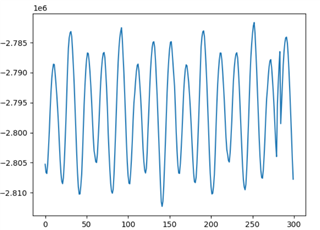Hi, TI's experts,I have some trouble with ads1299 for lead-off detection. My device is the same as Referential Montage. I replace a resistor between normal electrode and references electrode.Some issues are like below:
- For the DC 6uA current to detect resistor, can you provide a detailed explanation of the connection position of the pull-up or low-down resistors, using Referential Montage as an example.
- When I select AC mode to detect resistor,there is almost no difference in the data collected from all channels, regardless of whether external resistors are placed or not. If external resistors are not placed, I think it should be impossible to form a current path. Can you help me check the Register Configuration?
-reference signal is connected to negative input via SRB1;
-LOFF: 0Ah(6nA,31.2Hz), CHxSET: 60h, BIAS_SENSP:01h, BIAS_SENSN:01h, LOFF_SENSP:01h, LOFF_SENSN:01h, LOFF_FLIP: 00h, CONFIG4:00h.
The image is the waveform I measured.



